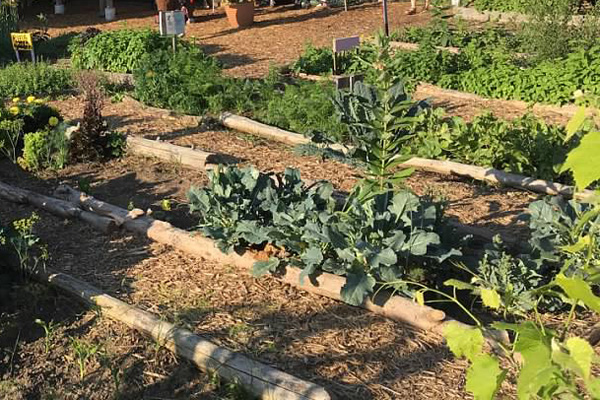Some Ideas on City Blooming You Need To Know
Some Ideas on City Blooming You Need To Know
Blog Article
Things about City Blooming
Table of ContentsA Biased View of City BloomingRumored Buzz on City BloomingCity Blooming Can Be Fun For AnyoneA Biased View of City Blooming6 Easy Facts About City Blooming Shown
Interested in expanding food to buy in the City of Chicago? Thinking of starting an area yard? Adjustments to the Chicago Zoning Regulation permit agricultural usages like community yards and urban ranches in lots of parts of the city. Below is a checklist of frequently asked concerns regarding the regulations and laws that farmers should consider when intending a city agriculture project.
The zoning amendment does not modify any type of various other codes managing composting, building permits, purchasing or leasing City owned home, business licenses or environmental contamination. There are existing codes that regulate these problems and they continue to be in full impact and might be appropriate to your task. Community gardens are generally owned or taken care of by public entities, civic organizations or community-based organizations and maintained by volunteers.
Urban ranches expand food that is planned to be offered, either on a not-for-profit or for-profit basis. Due to their commercial objective, city ranches need a company license.
The Best Guide To City Blooming
Composting is allowed but only for plant product that is generated and used on website. The amount of compost product can not exceed 25 cubic backyards at any kind of given time according to the criteria in 7-28-715 of the City's Municipal Code. Yes. Since the dirt at the majority of new yard sites requires changing, compost, soil, wood chips, or other products can be gotten to construct or enhance the expanding space - garden care.

If a structure authorization is required after that the hoophouse will certainly be thought about an accessory structure. You can learn even more concerning the structure license needs by contacting the Department of Structures. The 25,000-square-foot dimension limit is planned to stop a solitary area yard from controling an offered block or interfering with the block's existing household or business personality.
The restriction does not apply to gardens found in Public Open Space (POS) areas. Can there be more than one community garden that is 25,000 square feet on a single block? Yes. The dimension restriction puts on private gardens, not to private blocks. No. Secure fencing is not required, however, gardens that have big parking lot might be called for to set up secure fencing or various other landscaping features.
The 5-Second Trick For City Blooming
B1 & B2 areas call for that all commercial use tasks be conducted inside. Is fence required for urban farms? Fencings may be required, along with landscape design and screening, for certain parking areas and outdoor work or storage space locations depending on location and the details activity taking location.
Urban farms call for structure licenses and zoning approvals prior to building and construction (home and garden). Other kinds of city review might be needed depending on specific structures, tasks, size, landscape design, licensing, public health and stormwater monitoring concerns.
The Division of Service Affairs and Customer Defense can assist identify the specific type of business certificate that's called for. Off road vehicle parking is needed for most commercial projects in Chicago. The needed number of vehicle parking areas is based on the number of workers working on site and not the square video footage of the growing area.
Not known Incorrect Statements About City Blooming

A metropolitan ranch can offer compost material produced on site, however, the operation needs to abide with the regulations in 7-28-715 of the Chicago Municipal Code. Aquaponic systems are permitted indoors on city ranches in lots of zoning areas.
Approximately 5 hives or colonies of honey bees may be kept as an accessory usage. However, beekeepers must sign up with the Illinois Division of Agriculture. For additional information about the proposed zoning modification you may get in touch with the Division of Real Estate and Economic Advancement, Bureau of Preparation and Zoning at 312.744.8563.
Farming in cities and city areas An urban ranch in Chicago. Urban farming describes various practices of growing. https://yoomark.com/content/home-city-blooming, processing, and distributing food in metropolitan areas. The term also puts on the area activities of pet husbandry, tank farming, beekeeping, and horticulture in an urban context. Urban agriculture is distinguished from peri-urban agriculture, which happens in backwoods beside suburbs.
The Ultimate Guide To City Blooming
It can include a movement of organic farmers, "foodies" and "locavores", who seek to create social media networks based on a common values of nature and community holism. These networks can create by method of formal institutional assistance, ending up being incorporated right into regional town as a "change community" activity for lasting urban development.
The more straight accessibility to fresh vegetable, additional resources fruit, and meat items that might be become aware through city farming can boost food protection and food safety and security while lowering food miles, leading to lower greenhouse gas emissions, consequently contributing to environment adjustment mitigation. Several of the first evidence of metropolitan agriculture comes from Mesopotamia.
Report this page